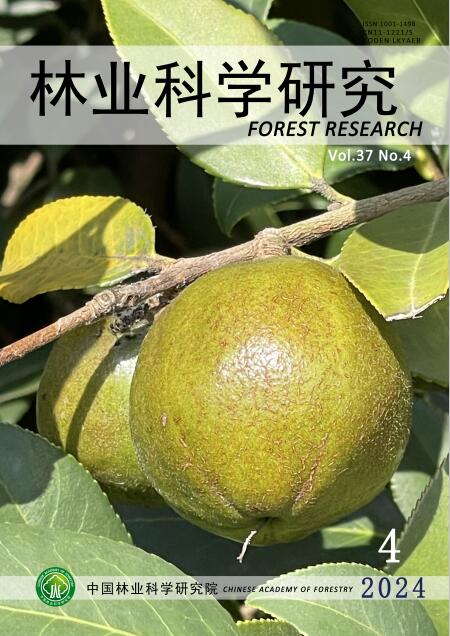Long-Term Forest Floor Fuels Accumulations in Sierran Mixed Conifer Subjected to Forest Restoration Treatments
Q4 Agricultural and Biological Sciences
引用次数: 1
Abstract
Long-term influences of mechanized thinning using a cut-to-length approach combined with on-site slash mastication along with those of prescription under burning on downed and dead fuel accumulations were evaluated in an uneven-aged eastern Sierra Nevada mixed conifer stand. Based on an initial inventory conducted soon after treatment implementation, accumulations in an unburned portion of the stand subunit subjected to thinning were elevated with respect to both 1+10 hr time lag and total fuel loads. In contrast, the near immediate effect of the under burn on these fuels was marked diminishment in their abundance. Nearly a decade later, however, effects of the mechanized and fire treatments had largely dissipated. In the interim between inventories, the thinned but unburned treatment combination exhibited the greatest reduction in 1+10 hr and total fuels while the unthinned and unburned combination also exhibited a large reduction in the former. Furthermore, diminished reductions in 1+10 hr fuels were apparent within the burned portions of the thinned and unthinned stand subunits, and the unthinned but burned combination was the only one to incur an increase in total fuels. These findings offer land managers insight regarding the persistence of fuel bed alterations induced by these increasingly common management practices in Sierran mixed conifer and similar forest cover types.森林恢复处理对雪兰混合针叶树长期森林地面燃料积累的影响
在内华达山脉东部一个年龄不均匀的混合针叶林中,评估了采用切割长度方法结合现场切割咀嚼以及燃烧下处方对倒下和死燃料积累的长期影响。根据处理实施后不久进行的初步清查,经过减薄处理的林分亚基未燃烧部分的蓄积量在1+10小时的滞后时间和总燃料负荷方面都有所增加。相反,欠燃对这些燃料的直接影响是它们的丰度明显减少。然而,近十年后,机械化和火灾处理的影响基本上消失了。在库存之间的过渡期间,减薄但未燃烧的处理组合在1+10小时和总燃料方面表现出最大的减少,而未稀释和未燃烧的组合在前者方面也表现出很大的减少。此外,1+10小时燃料的减少在变薄和未变薄的林分亚基的燃烧部分明显减少,而未变薄但燃烧的组合是唯一导致总燃料增加的组合。这些发现为土地管理者提供了关于这些日益普遍的管理做法在塞拉利昂混合针叶林和类似森林覆盖类型中引起的燃料层变化的持久性的见解。
本文章由计算机程序翻译,如有差异,请以英文原文为准。
求助全文
约1分钟内获得全文
求助全文
来源期刊

林业科学研究
Environmental Science-Ecology
CiteScore
0.90
自引率
0.00%
发文量
4834
期刊介绍:
Forestry Research is a comprehensive academic journal of forestry science organized by the Chinese Academy of Forestry. The main task is to reflect the latest research results, academic papers and research reports, scientific and technological developments and information on forestry science mainly organized by the Chinese Academy of Forestry, to promote academic exchanges at home and abroad, to carry out academic discussions, to flourish forestry science, and to better serve China's forestry construction.
The main contents are: forest seeds, seedling afforestation, forest plants, forest genetic breeding, tree physiology and biochemistry, forest insects, resource insects, forest pathology, forest microorganisms, forest birds and animals, forest soil, forest ecology, forest management, forest manager, forestry remote sensing, forestry biotechnology and other new technologies, new methods, and to increase the development strategy of forestry, the trend of development of disciplines, technology policies and strategies, etc., and to increase the forestry development strategy, the trend of development of disciplines, technology policies and strategies. It is suitable for scientists and technicians of forestry and related disciplines, teachers and students of colleges and universities, leaders and managers, and grassroots forestry workers.
 求助内容:
求助内容: 应助结果提醒方式:
应助结果提醒方式:


